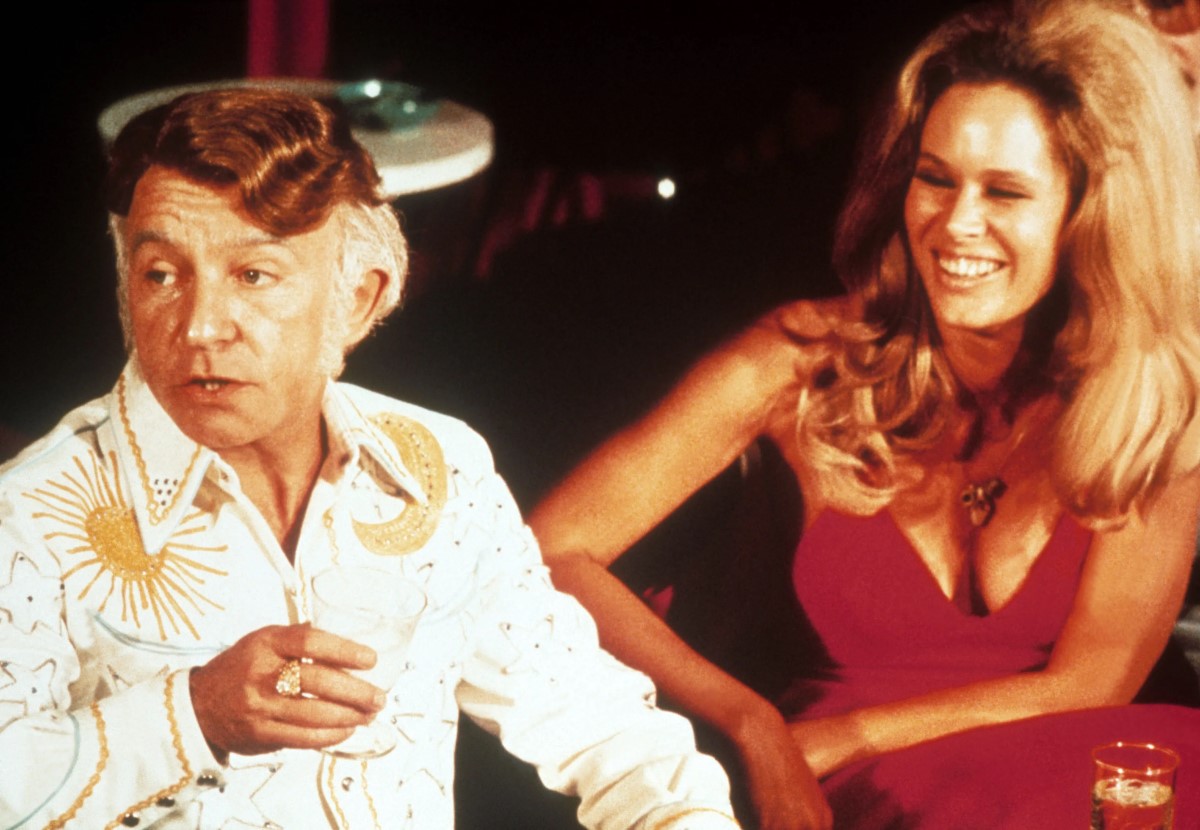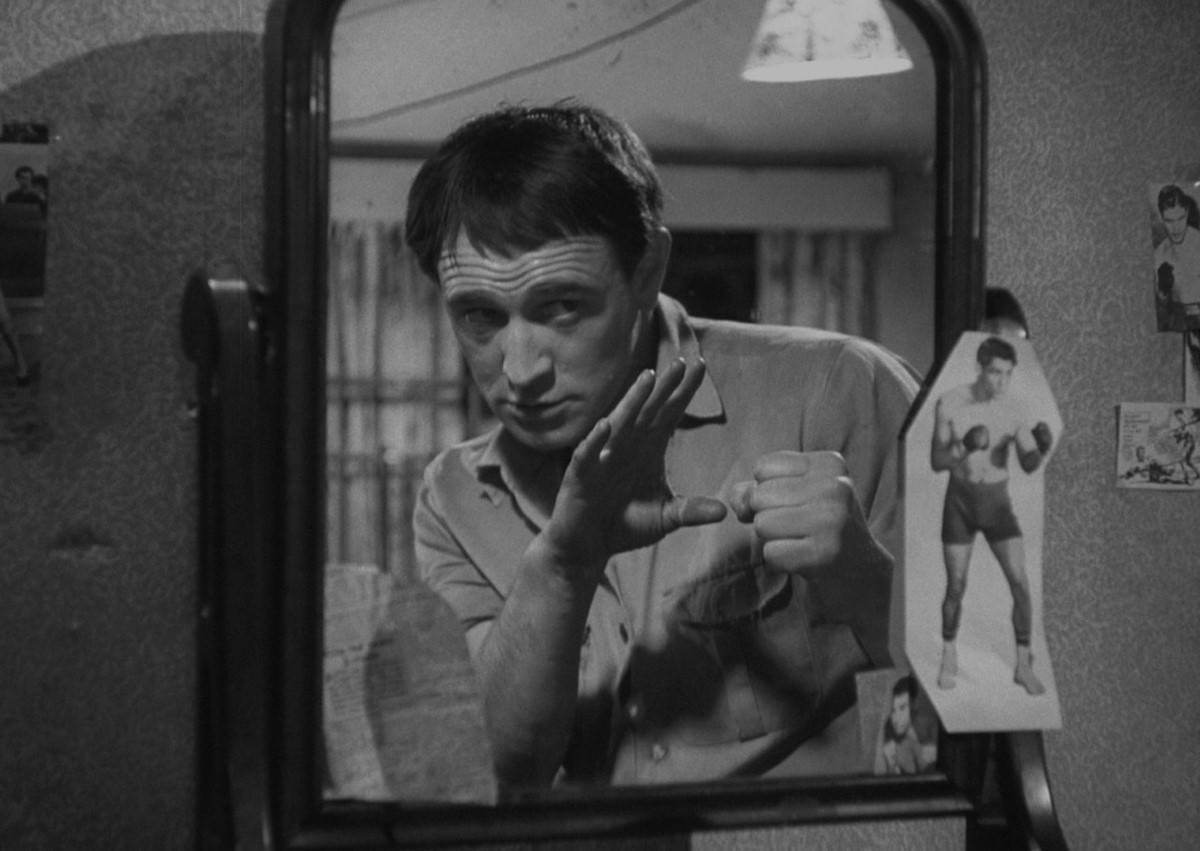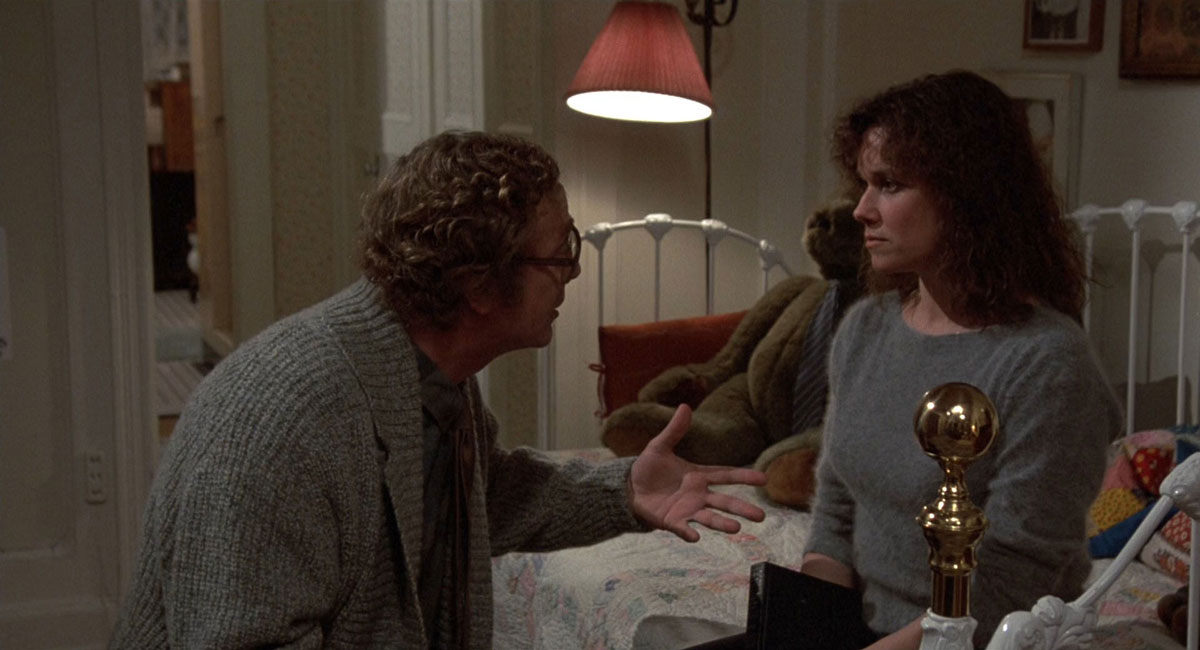by Pauline Kael
Outland has a great look. The setting is Io, a volcanic moon of Jupiter, which the League of Industrial Nations has franchised to an Earth-based company, Con-Amalgamate, and the metal frontier city that Con-Am has constructed is like the offspring of a gigantic pipe organ and an oil rig. The miners sleep in layered cubicles; their living quarters are an erector-set honey comb—functionalism divorced from all civility. At work in the titanium mine, the men wear space suits with headgear that resembles a deep-sea diver’s, but with a string of lights inside circling the visors—like the lights around an actress’s mirror. To relax, the miners, and the other people on Io (the administrators, the maintenance workers, the corps of prostitutes, and others who provide support services), go to the leisure club—a big bar that features erotic entertainment. Writhing, dancing, and maybe copulating couples—a man and a woman, two women—perform in blue-green laser spotlights. The film aims for realistic sci-fi: the future is conceived as a continuation of capitalist exploitation in space, and the staging of the action sequences accentuates the sealed in, claustrophobic boredom of life on Io. The workers (who sign on for a year) are meant to be just like ordinary Americans of the present—the kind who might have worked on the Alaska pipeline.
O’Niel (Sean Connery), the new federal district marshal, whose job it is to keep law and order among the two thousand people on Io, learns that a high proportion of the miners are going berserk and killing themselves or attacking others. Through the use of his computers and his TV monitors, O’Niel quickly sorts out the facts: Sheppard (Peter Boyle), who runs the mining operation on Io for Con Am, is selling the workers amphetamines that keep them speeding for ten or eleven months, until they become psychotic. That’s how Sheppard has been able to raise productivity and ingratiate himself with the top management. When O’Niel interrupts this operation by destroying a shipment of the drug, Sheppard sends for hired killers, and, just as in High Noon, the one lone good man finds he has to fight by himself.
This isn’t a Western situation, though, where the local people are indebted to the lawman who has protected them but are afraid to aid him in a fight against professional gunmen; it’s an existential High Noon. Outland is set in a morally grimy future: nobody else in the lunar company town cares what happens. O’Niel fights to prove something to himself. What, exactly, isn’t clear. Sean Connery isn’t afraid to open himself to the camera—he lets you read every shade of feeling that O’Niel hides from the other characters. He gives the movie the illusion of a central human presence. (Without him, it would be junk metal.) But when the camera moves in, expectantly, for O’Niel’s big soliloquy—the moment when he will explain why he must fight—Peter Hyams, who wrote and directed Outland, has no words to put in O’Niel’s mouth. Probably, Hyams is afraid that if the hero stood up against Sheppard’s hirelings because he believed that the law meant something, or even out of disgust over the cruelty of the drug traffic, Outland might be jeered at as naive and optimistic. But in using the structure of High Noon, with its preachy predictability, and then denying the hero’s actions any heroic meaning, he deadens everything—even the spectacular chases through the tubular sets and the murderous grappling of bodies in space. The chases seem to be prolonged for their own sweet sake.
The miners come to Io because they need the high wages for their families on Earth. Yet Hyams expects us to believe that the marshal can’t arouse them (or their union leaders) to indignation about the way they’re being exploited by amphetamines—or even to anger about the gruesome deaths of their buddies. Hyams is like a guy who saw High Noon and didn’t get it. It’s insane that the workers refuse to help O’Niel—that they don’t mind being killed off. The picture would have had much more point if it had jettisoned the Western-in-space idea and had one of the miners as the hero who discovers how the company is speeding them to death.
Outland is full of missed opportunities. O’Niel watches what’s going on all over the town on his wall of television monitors, and he can deduce who the drug pushers are because he has a computer that sorts out the names of Sheppard’s henchmen for him. Astonishingly, Sheppard—the general manager—doesn’t have any monitors on which he can watch what O’Niel is up to. It might have been fun if he had—if he and O’Niel followed each other’s moves until, maybe, they were just sitting at their sets staring at each other. As Hyams lays it out, it’s too simple—only O’Niel has technical resources. All the imagination seems to have gone into the sets and costumes and chases. When the hired killers arrive on the space shuttle and stalk O’Niel, his only ally is a sour, snappish, elderly woman doctor, who’s probably a boozer. (Frances Stemhagen does wonders with the role, and when this lanky doctor races desperately through long passageways to help O’Niel, she’s surprisingly graceful.) Meanwhile, the miners, who know that O’Niel is being stalked, lounge around in their bar, and Sheppard, the murderer of dozens of their fellow-workers, sits among them, accepted. This cockeyed setup might have had at least a little point if there had been some TV monitors in the bar and if practically everybody on Io were clustered there to watch the big shootout— and perhaps lay odds on the outcome.
Hyams isn’t one for touches, though. He has an eye for staging action, and he uses the stunning industrial-nightmare sets (designed by Philip Harrison) for a lot of feverish fast tracking. But he proceeds in an almost painfully straightforward way, even though it doesn’t take him where he needs to end up. In High Noon, the gunslingers were the enemy; here the hit men are merely Sheppard’s employees. So when G’Niel dispatches them the story still feels incomplete. We’re supposed to know that Sheppard is finished—we’ve heard a Con-Am boss telling him that if these killers didn’t take care of his problem the next group would be coming for him. But when O’Niel is content to give Sheppard a wallop on the jaw, justice doesn’t seem to have been done. The climactic actions of the film involve O’Niel fighting nonentities.
The casting is very convincing, though the characters are purely functional. Except for Connery and Frances Sternhagen, only one of the actors— James B. Sikking, who plays Montone, O’Niel’s sergeant—makes a strong impression. You can believe that Montone has been on Io awhile; he’s like a cop who has been going through the same routine for a long, boring stretch. His lines are no better than anybody else’s, though. The stuff Hyams lets people say! O’Niel’s wife (Kika Markham) leaves him a videotaped goodbye: “I just can’t take it anymore…. Paulie… is a child and he’s never set foot on Earth. Never… Don’t you see, he deserves a childhood.” It’s obvious that O’Niel loses his wife and son so that we can appreciate the sacrifice he makes in order to face the challenge of fighting evil, but who could work up feelings of sympathy for the loss of a wife who talks like that? She’s the Ghost of Rotten Movies Past.
Outland recalls another hermetic sci-fi film—the somewhat more spirited Alien (which was also produced by the Alan Ladd, Jr., team). Outland doesn’t have the leavening of freakishness that Alien did, but it, too, features an element of the repugnant, and it has a comparable grinding unpleasantness. Both these films belong to a new subgenre: Jacobean sci-fi. The deaths are the high spots and are as powerfully upsetting as the moviemakers dare to make them. In Outland, people who walk into a depressurized air lock without their space gear die like puffed pigs—their heads and bodies swell and explode, leaving a mess of splattered blood and intestines. And for those who want something more conventional, a deranged worker slashes a naked prostitute. The picture is horrifying yet somber, and the barrage of sounds coming from all directions intensifies the pressure—we can’t escape the clanging metal or the footsteps or Jerry Goldsmith’s score, which is on top of it all. This could be the Dolby movie of the year. During O’Niel’s last fight, the noise rises to a Gotterdammerung level. At the end, Hyams has a note dedicating this film to his two young sons; he may be perfectly sincere.
New Yorker, June 29, 1981




